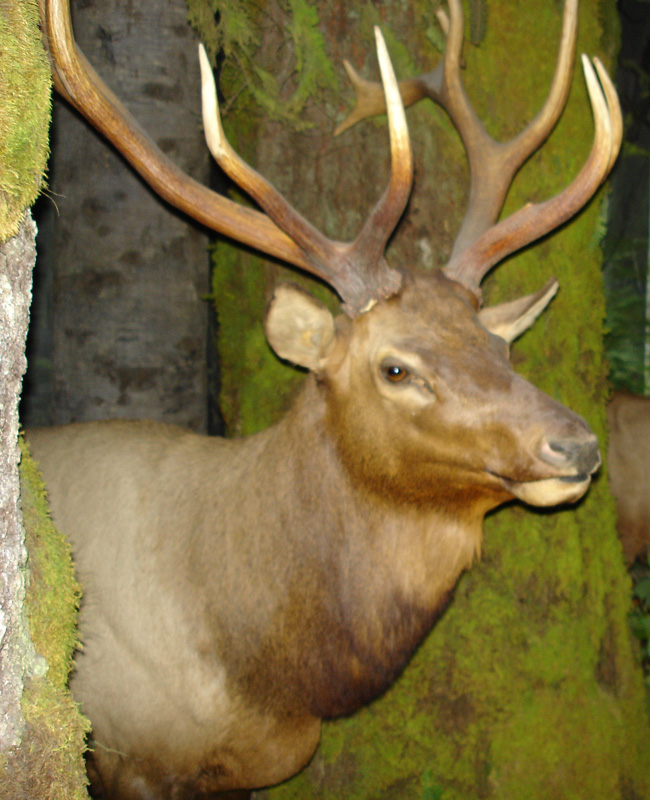Introduction
The elk or wapiti (Cervus canadensis) has long been important to Indigenous peoples as both a source of food, clothing and raw materials and were likely hunted by Indigenous peoples when they first appeared on Vancouver Island.
The ancestors of today’s North American elk expanded from Siberia into the new world (Meirav et. al. 2014). They may have taken both inland and coast routes. How long they have existed on Vancouver Island is a subject of interest that has yet to be determined. Could elk have survived on the Island since the last interglacial period?

The Changing Climate
We do not have much detail on what food resources would be available to elk during the cold periods of the last glacial advances around 16,000 to 15,000 years ago. We do know that elk were more likely to survive the warmer and dryer climatic period called the Bølling-Allerød dating from 14,690 to 12,890 years ago. This period was followed by an ecological shift called the Younger Dryas, from 12,900 to 11,700 years ago, that saw a return to colder glacial conditions.
The date of 11,700 years ago marks the end of the Pleistocene glacial periods and the beginning of the Holocene warmer period. It is to this time period, 11,630 years ago, that we date the elk remains, RBCM006765A, discussed below. Over the next 800 years bison roamed the Victoria region with the herds of elk (Wilson, Hebda and Keddie, 2003). Bison disappeared but elk survived.
Elk Adaptation
Increasing evidence is showing that there were ice free areas on Vancouver Island earlier than previously known (Kubiak et. el. 2022; Hebda et.al. 2022). We know that the behavior and physical characteristic of the Roosevelt elk allows it to be adaptable to changing environments and food sources. Roosevelt Elk occur in coniferous forests, as well as in deciduous stands and non-forested habitats, such as wetlands and vegetated slides and rock outcrops Most Elk on Vancouver Island today are migratory; occupy three distinct seasonal ranges in the winter, spring, and summer/fall periods. Elk are exceptionally flexible ruminants, as evidenced by their capabilities to inhabit such diverse areas as prairies and rain forests (Shackleton 1999; Nyberg and Janz 1990; British Columbia 2014).
Because the rumen to body weight ratio is higher in Elk than in deer, “Elk are able to digest relatively larger amounts of coarse forage without running short of incoming energy. They can therefore eat more low-energy foods than deer, particularly grasses, sedges, and coniferous foliage during fall and winter” (Quayle and Brunt 2003).
What the DNA Suggests
Biologist Renee Polziehn (2000) concluded that: “Overall, North American wapiti populations express little genetic variation, however isolated populations such as the Tule and Roosevelt wapiti were differentiated at both nuclear and mitochondrial markers” (Polziehn 2000). A microsatellite study showed that: “The greatest genetic distances were observed between the Vancouver population and all other populations. Using the assignment test, Roosevelt wapiti (C. e. roosevelti Merriam 1897) assigned only to the Vancouver Island population. The distance and assignment values suggest a divergence of the Roosevelt wapiti from other populations and support the subspecific status for the Vancouver Island population” (Polziehn, Hamr , Mallory and Strobeck 2000).
This DNA analysis suggests that Elk have been on Vancouver Island for a very long time. It opens the question to which direction the elk on Vancouver Island came from and whether they were present on Vancouver Island before their occurrence further to the east. If the genetic make-up of our recently dated elk from the Saanich region (below) is similar to historic Island specimens, this would indicate that they travelled either down the coast and lived on Vancouver Island throughout the last glacial episode or elk occurred on the mainland far earlier than previously believed and the current mainland populations were late comers into the mainland regions.
Here I will give an overview of the description and context of the dated early Holocene elks and three other specimens that are potentially of an early Holocene age and are in need of future radio-carbon dating and DNA analysis.
McKenzie Avenue Elk. RBCM006765A and B.
The 1963, notes on the Mammal collection RBCM006765 did not recognize there were two individuals represented by the remains. There are two right mandibles. I have assigned the pair of mandibles with maxillae, skull and antlers as McKenzie Street Elk number 1 and the second right mandible as McKenzie Avenue Elk number 2. The rib and foot bones could belong to either number 1 or 2.
Elk 6765A #1 has been dated to a range of 11,680 to 11,630 years before present. It is currently the oldest dated elk in the Pacific Northwest. Its cranium is missing the frontal and nasal bones, but the entire occipital and most of the parietals and squamosal are present allowing from some comparative measurements to be taken. The open-ended basal cranium does not allow for cranial capacity measurements. Broken off portions of the cranium are attached to the base of the broken off antlers. The right maxillae with all teeth is present and the right lower jaw is complete with all teeth. A second individual, #2, is presented by a second right jaw with a complete set of teeth. There are also a rib and three foot bones that may be part of either individual. The long antlers of #1, with a small extra tine at the distal end, and the presence of deciduous teeth of P-2 to P4 indicate the specimen is a yearly elk. 6765A #2 elk has its P-2 to P-4 permanent teeth partially grown in suggesting it is older than #1, but still of a young age.
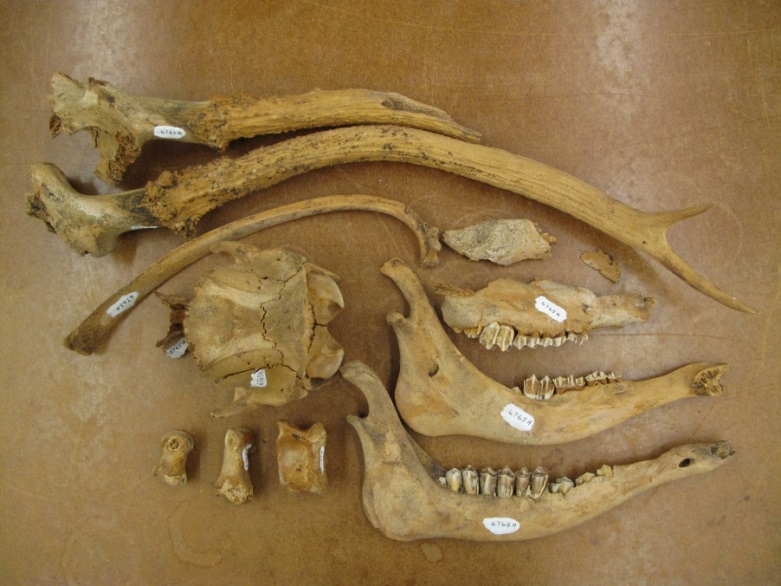
McKenzie Avenue Elk #1 and #2. RBCM Mammal Collection 6765A
Find Location and Dating
The remains were found by workman on October 28, 1963, while excavating for the installation of a new storm drain across McKenzie Avenue near the Saanich Municipal Work Yards at 1140 McKenzie Avenue. The site was visited shortly after the finds by Don Abbott (then Curator of the Archaeology Division of the Provincial Museum – now RBCM).
The location is just above the intersection of Borden Street and McKenzie Avenue. This is part of a low area that was subject to flooding in the past and often formed a lake in the early 20th century. Today a stream flows through the Municipal yards west of Borden Street and south under McKenzie Avenue. Old maps show the creek crossing the property line at 81.14’ west of the intersection of Borden Street and McKenzie Avenue. In part of the creek bed (exposed and running through the Municipal yard in the 1980s), I observed and collected marine shells from 1.6 meters below the existing surface in 1987 – these are now in the RBCM palaeontology collections and tentatively identified as Mya truncate Linnaeus (see Appendix 1).
A newspaper account at the time reported the remains as being 8 feet below McKenzie Avenue buried beneath “a five-foot layer of peat moss and a three-foot layer of earth containing a mixture of mussels and clam shells”. The lack of marine clay adhering to the bones suggests to me that they were at the bottom of swamp deposits located above the older marine deposits that contained shells. This is a typical scenario for low lying areas around greater Victoria (see Keddie 2019). Lake bogs form in depressions that were previously an ocean inlet. I surmised that the elk remains likely dated to the same time period as previously dated bison remains found in similar situations – that is to an early post glacial time.
The Radio-carbon Date
I extracted bone material from McKenzie Avenue elk number 1, which Richard Hebda (then Curator of Botany and Paleo-botany) sent away for radio-carbon dating. The results confirmed that the elk remains were the same age as the oldest bison bones having a calibrated age of between 11680 and11630 years before present:
Beta 303258. AMS-Standard delivery. Bone collagen. 2 SIGMA Calibration 11,630. (Received August 31, 2011). Measured Radiocarbon Age. 10,090 +/- 40 BP 13C/12C -21.2 0/00. Conventional Radiocarbon Age 10,150 +-40BP. 2 Sigma calibrated results: Cal BC 10,040 to 9,740 (Cal BP 11,990 to 11,690) and (95% probability) Cal BC 9,730 to 9,680 (Cal BP 11680 to 11630).
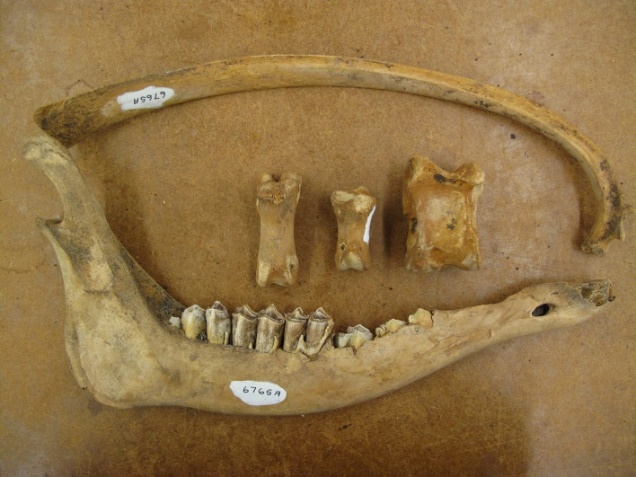
McKenzie Avenue Elk number 2. RBCM6765B. Right mandible only.
More Bones
After witting up the above I determined that another cluster of elk bones donated to the RBCM were from the same location and parts of the same two elk recovered in 1963, and recorded as the McKenzie Street Elk RBCM006765. It would appear that several people took away the remains of what were likely two complete elk skeletons found together during the 1963 excavation into the old peat bog. This second batch of elk remains are another part of those removed by private citizens.
This additional group of bones from the site is a young elk – based on the detached epiphysis on all leg bones. The remains include:
The detached epiphysis of the right proximal tibia; right femur; right humerus; left and right fibular tarsal bone; right talus bone; a portion of pelvis; three thoracic vertebra – one with detached epiphysis; cervical vertebra with detached epiphysis; right tarsal bone with detached part of epiphysis; two detached epiphysis to be identified; three ribs and a fragment of tooth.
One of the bones has written on it: “Found in peat bog on McKenzie Road near Reynolds School, Victoria”. The right talus bone from the above remains is a match for the left talus bone from one of the individuals from RBCM006765 which was dug up from the same bog under McKenzie Street.
The following record is in a letter send May 30, 1973 to paleontologist Graham Beard of Qualicum Beach, B.C. from Judy Cameron of Victoria:
“a geologist friend of my mother, who is going away for a year & so is cleaning up his house, offered me a bag of 2500 yr–old elk bones when I told him that you are interested in such things. Would you like them? I’m coming up island in a few weeks time and could bring them then. They were found in a peat bed on MacKenzie Road near Reynolds School. Unfortunately, someone else took the skull but there are a few nice vertebrae & other odds and ends.”
The date of the remains in the letter was a guess at the time and not based on any radio-carbon dating. These remains were given to Dr. Richard Hebda who provided them to myself on May 30, 2017 to examine and arrange to deposit in the RBCM collection.
Elk Remains RBCM6413A and RBCM6413B.
These heavily weathered and poorly documented elk remains are from the Mount Work Gravel Pit (also spelled Wark). Mount Work was named after John Work of the HBC – whose name was originally spelled as Wark.
The Original catalogue has “Wark Mt. Saanich, BC”; “relic skull antler frags”. It was donated Sept. 15, 1958 by Mr. Bolton. “48 degrees 123 minutes N.E. quadrant”. The remains were not recognized as being from at least two individuals. I therefore tentatively assigned the portions as #6413a (three skull pieces) and #6413b (skull fragment with antler stubs). #6413c (occipital skull section) and #6413d (about ten antler fragments).
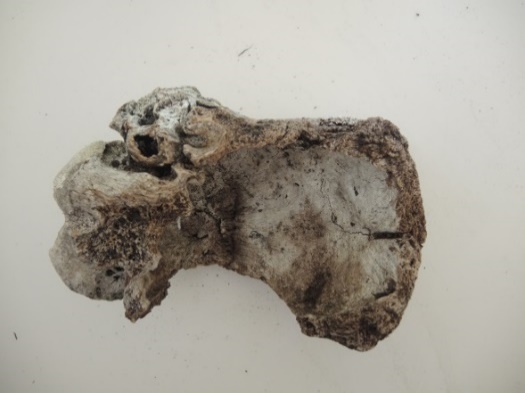
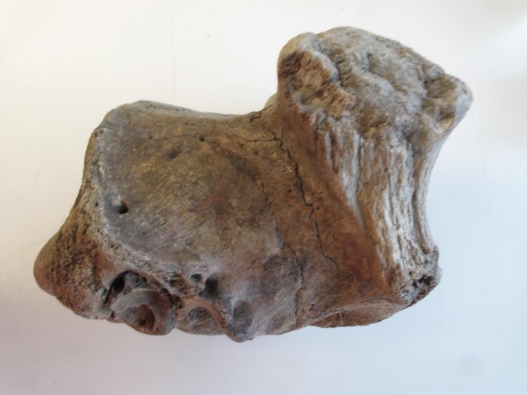
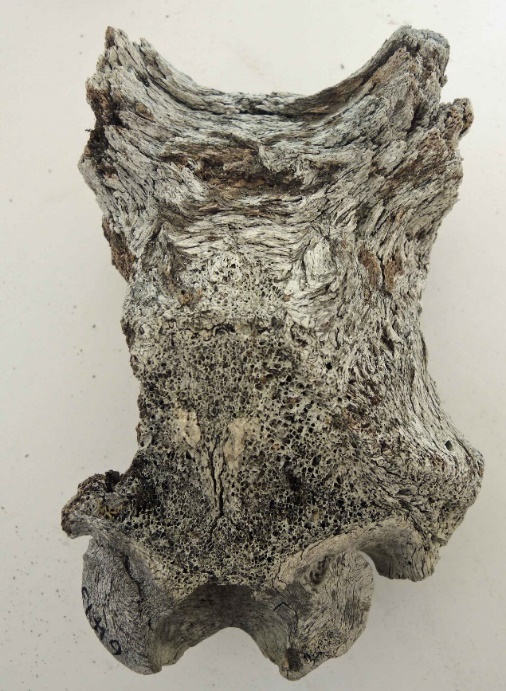
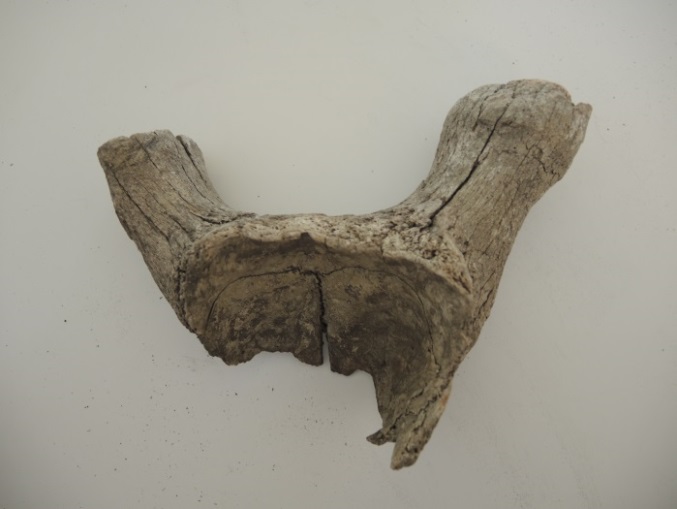
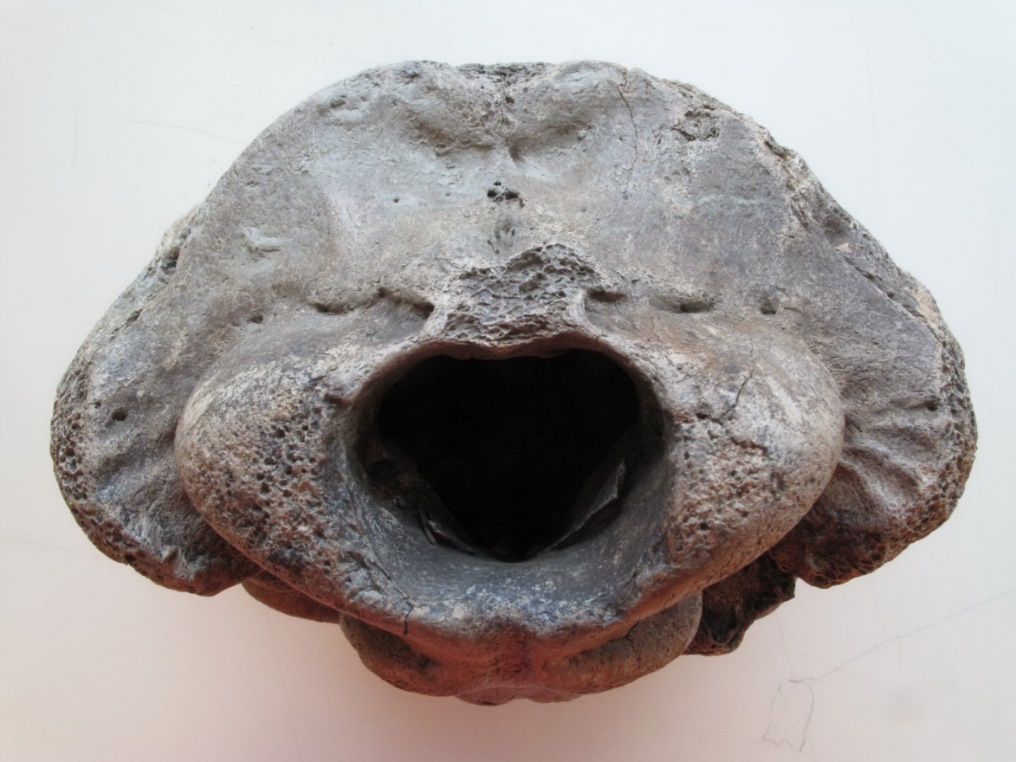

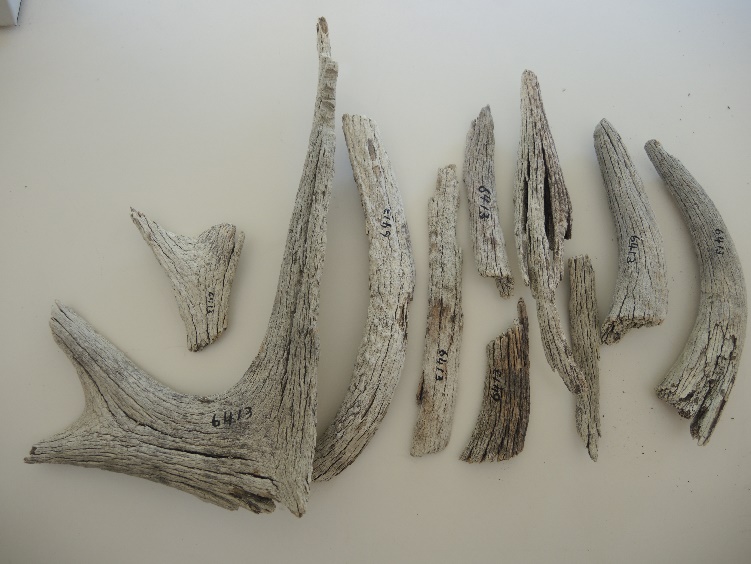
Fairfield Swamp Elk Remains
A pair of antlers of a yearly elk were found with a piece of the skull attached, which shows that the antlers were not shed. The two fit together at the base.


Conclusion
It appears that the two McKenzie Street yearling elk must have got bogged down in the swamp and died of natural causes. There is no evidence that they were killed by humans. The Fairfield Swamp elk may have met the same fate. There was likely a whole skeleton that was dug up, but only the antlers were kept by the person who donated them. I suspect that the Fairfield Swamp elk remains are near the same age of the McKenzie Street remains, but the specific context of the Mount Work remains is unknown and they may represent remains from older gravel deposits.
We now know that elk were on Vancouver Island by, at least, the beginning of the Holocene. More future radio carbon dating and DNA analysis is necessary to answer the question of when elk came to Vancouver Island. The sources of information on this topic are will be found in elk remains in the Zoology, Paleontology and Archaeology collections from across Vancouver Island.
Appendix 2 is a list of other elk specimens from Vancouver Island that should have DNA analysis and a few with possible old contexts that should be radio-carbon dated for the purpose of tracing historic movements of elk on Vancouver Island,
In Eastern North America Elk remains were found associated with a burial dating to 12,600 BP in Montana (Rasmussen et. al. 2014). The oldest dated elk on the mainland to the south is from the McKittrick site in California dated to 11,160 B.P. (Fox-Dobbs 2014). In Washington State an elk dating to 9,800 was found in the Marmes Rock shelter of southeastern Washington, another about 9800 years BP. on the Snake River and a bone from Sentinel Gap in Central Washington State dated to 10,200 BP (Lyman 2010). Further dating will likely push all of these dates further back in time.
Appendix 1. Borden Street Shell Collection. Grant Keddie Notes 2009.
These shells were exposed in a cut bank of a tributary of Blenkinsop creek to the West of Borden Street and to the north of McKenzie Avenue. The location is currently the Saanich Municipal Works Yard.
The shells represent evidence of a high sea stand at this location. Shells were first observed in this area during a street excavation project in 1962. At that time Don Abbott (Archaeology Division of the – then – Provincial Museum) thought that these deposits may be either cultural or natural deposits and recorded the location as a possible “inland shell midden”. Site number DcRu-34.
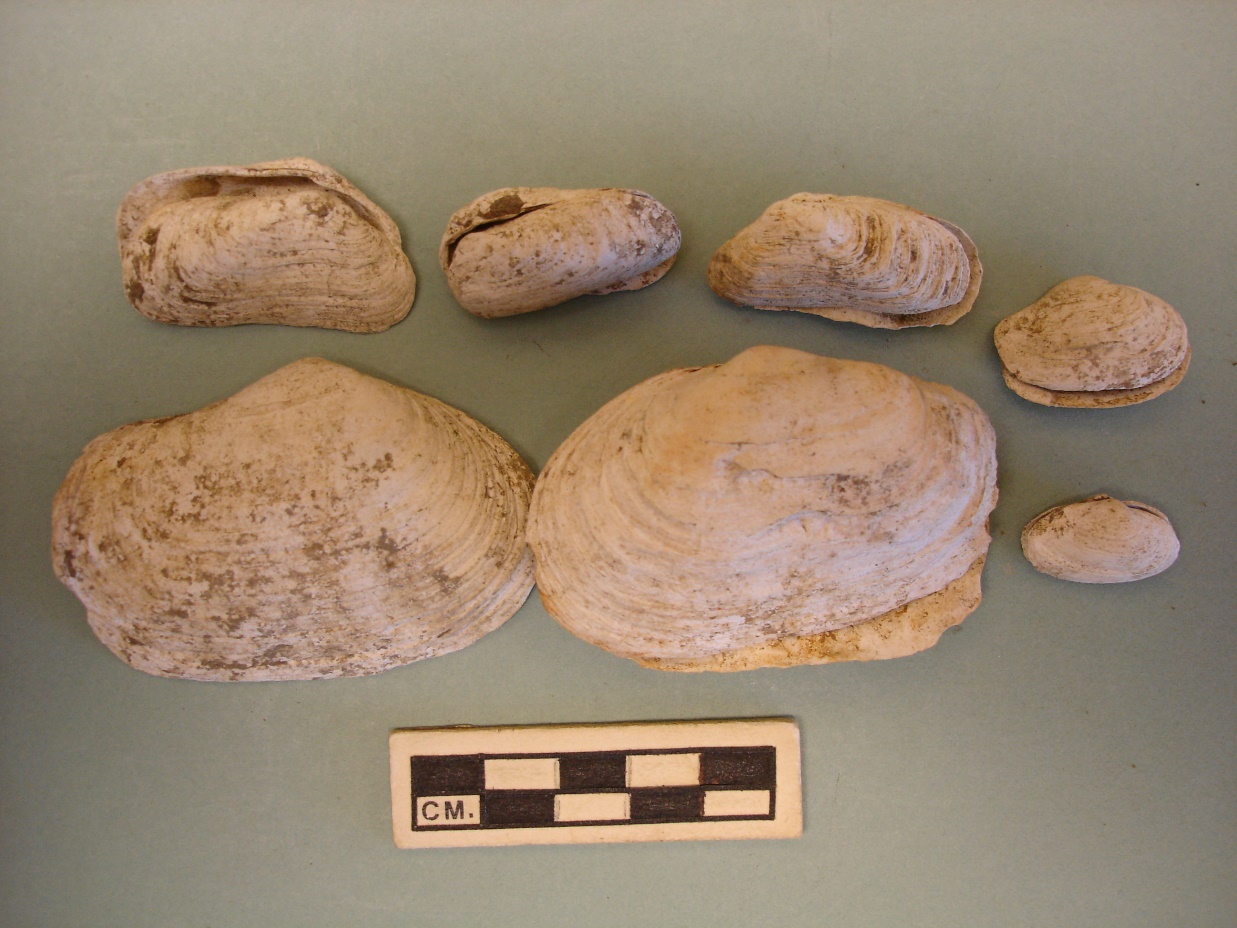
Abbott recommended that the deposits “should be looked at by a geologist”. A few artifacts were found in the general area (farmers fields) but are not related to these shell deposits. Elk remains were recovered at this location by a private citizen in October of 1963. These elk remains are catalogued as 6765A in the natural history collection.
These shells are naturally occurring ocean mollusks. They were in-situ in a sandy matrix overlaying a blue-grey clay layer (Victoria Clay?) and extended into the clay layer.
After the retreat of the ocean waters the lower area to the south-east became a fresh water swamp. In historic times (as late as the 1950s) much of the area to the south-east of this location was under water during flood times. I talked to people who lived in the area in the early 1900s who referred to the area as a lake, and remembered occasionally paddling out in a boat.
The elk skeleton was described as being found beneath “a five-foot layer of peat moss and a three-foot layer of earth containing a mixture of mussels and clam shells”. It is more likely that the elk remains were found at the bottom of the peat and not under the ocean deposits. The location where the Elk remains were found is now under McKenzie Street and much of the neighbouring area culverted and build over.
I collected these shell samples on February 20, 1987 when I observed that the creek had been freshly dug out on the Municipal property. The soil samples were extracted from in-situ deposits below upper disturbed layers. Some of the mollusks had both valves present. A sample of matrix (Sample #1) was extracted from inside the mollusks for future pollen analysis and other forms of micro-analysis. This sample was within 10cm above the blue clay layer. Another sample (#2) was taken for the same purposes. This was extracted 5cm into the blue-grey clay layer. A sample of the mollusks (sample #3) was kept for dating or other forms of destructive analysis.
A GPS reading needs to be taken at this location to get a precise elevation. Previous radio-carbon estimates(corrected) in the area include Blenkinsop Lake marine shell dates at 27m elevation of 12,110+-94BP, and a McKenzie Avenue drill hole date at 26m of 12,170+-94BP. Evidence of a high beach strand can be found around 4500 Lockside drive to the N.E. of Blenkinsop Lake at about 34 meters elevation.

Appendix 2.
RBCM Vertebrate Zoology Collection List of Vancouver Island Elk Specimens for possible DNA analysis. Grant Keddie, March 26, 2011.
This list includes Elk remains from Vancouver Island and the Gulf Islands. The purpose this is to trace the historic movements of Elk on Vancouver Island. Some of these may be of a sub-fossil nature and should be radio-carbon dated for comparison with early Holocene examples.
006413. Mount Work. Two sub-fossils. Collected 1958.
0011849. Alberni 1937. A. Monks.
001859. Shaw Creek, 1937. Ian McTaggert-Cowan.
004554. Mount Maxwell. 1939. Saltspring Island,
004029. Antler. Location? (check letter files). There are two original tags that have been ripped in pieces: (1) “Found by J.A.C. Buckland. Some months after specimen no.1. Embedded under roots (?) —old hemlock tree estimated to be 118 years of age. This tree had been felled 5 or 10 years previously to finding of portion of antler which was found to be part of specimen no. 1 found some distance away. Ex League of Conservationists via Don Buckland”. (2) Only half of tag 2 remains: “Fo— Das—Hamil — Ex Leagu— Via Do—“. The name “Hamil..” is Hamilton here and the “Do..” again referring to Don Buckland.
05790. 1953. Junction of the Nanaimo & Green Rivers, Nanaimo Area. Charles Guiguet & D. Robinson.
05791. 1953. Junction of the Nanaimo & Green Rivers, Nanaimo Area. Green River, Nanaimo Area. (Assumed same collectors as 05790).
005807. Northwest Bay.
006164. 1956. Antlers sawed off. Northwest Bay. Don Robinson.
006190. “Three miles below Youbou”. Skull with jaws. 1965. Game Branch.
006191. Black Creek. C. Estlin. 1954.
006193. Oyster River. 1945. Charles Guiguet.
006194. Nanaimo Lakes, Sodie Creek. Clinton Bye. Skull with jaw. 1956.
006333. Junction Green River & Nanaimo River. Skull with jaws. 1955. Game Branch.
006334. Nanaimo River. Charles Guiguet Cervus skull. 1957. (? also assigned with Alces material).
006335. South Fork of Nanaimo River. Cervus. Skull. Mandible broken. 1957. Don Robinson.
015461. Nanaimo River. Jump Lake. 1 mile East of South fork. Cervus. Skull. No Mandible. 1968.
015462. Nanaimo Lake. “Cz Road BR.7, 200 YD north main Rd.”. Cervus. Female.
015463. Nanaimo. Jump Creek junction with Rheinhart Road. Cervus. Skull. No mandibles.
015464. Nanaimo Lakes, Green River, forth lake. 1968. Cervus. Skull. No mandibles.
015465. Nanaimo Lake, 4th lake. “Cz Road, BRM 2 miles east”. Cervus. Skull.
015466. Cowichan Lake, Shaw Creek. One mile north of North Shore Road. 1969. Cervus. Skull. Female.
015469. Ucona River Valley, South and west of Kuhlin Lake. Cervus. Skull. Female. No mandibles. 1969.
015470. Muchalat River Valley. Tahsis Company East road. 1969. Cervus. Female. No Mandible.
015471. Paterson Lake, 0.5 mile west; east facing hill. 1969. Cervus. Skull. Female.
015472. Patterson Lake. Two miles South-east facing hill. Cervus. Skull. Female. No mandibles. 1969.
0160040. Herber River. 1986. Cervus. Skull with mandibles. Ministry of Environment.
References
Hebda, Christopher F.G., Duncan McLaren , Quentin Mackie , Daryl Fedje , Mikkel Winther Pedersen, Eske Willerslev, Kendrick J. Brown, Richard J. Hebda, 2022. Late Pleistocene palaeoenvironments and a possible glacial refugium on northern Vancouver Island, Canada: Evidence for the viability of early human settlement on the northwest coast of North America. Quaternary Science Reviews, Vol 279. 107388.
Fox-Dobbs, Kena, Robert G. Dundas, Robin B. Trayler, and Patricia A. Holroyd. 2014. Paleo-ecological Implications of New Megafaunal 14c ages from the McKittrick Tar Seeps, California. Journal of Vertebrate Paleontology 34(1):220–223.
Keddie, Grant. 2019. Victoria Underwater. The Haultain Valley 14 meter Ocean Standstill. grantkeddie.com
Kubiak, Cara, Vaughan Grimes, Geert van Biesen, Grant Keddie, Mike Buckley, Reba Macdonald1 and M. P. Richards. 2022. Dietary Niche Separation of three late Pleistocene bear species from Vancouver Island, on the Pacific Northwest Coast of North America. Journal of Quaternary Science (2022) 1–13.
Ludt, C. J., W. Schroeder, O. Rottmann, and R. Kuehn. 2004. Mitochondrial DNA phylogeography of red deer (Cervus elaphus). Molecular Phylogenetics and Evolution 31: 1064–1083.
Lyman, R. Lee. 2010. Taphonomy, pathology and paleoecology of the terminal Pleistocene Marmes Rockshelter (45FR50) “big elk” (Cervus elephus), southeastern Washington State, USA. Canadian Journal of Earth Sciences 47:1367-1382.
Meirav Meiri, Adrian M. Lister, Matthew J. Collins, Noreen Tuross, Ted Goebel, Simon Blockley, Grant D. Zazula, Nienke van Doorn, R. Dale Guthrie, Gennady G. Boeskorov, Gennady F. Baryshnikov, Andrei Sher, Ian Barnes. 2014. Faunal record identifies Bering isthmus conditions as constraint to end-Pleistocene migration to the New World. Proceedings of the Royal Society, B, Biological Sciences. Volume 281, issue 1776.
Meredith, E.P., J.A. Rodzen, J. D. Banks, R. Schaefer, H. B. Ernest, T.R. Famula, and B. P. May. 2007. Microsatellite Analysis of Three Subspecies of Elk (Cervus elaphus) in California. Journal of Mammalogy, 88(3):808.
British Columbia. Ministry of Lands and Natural Resource Operations. 2014. A Management Plan for Roosevelt Elk in British Columbia.
Nyberg J.B. and D.W. Janz. 1990 (Editors). Dear and Elk Habitats in Coastal Forests of Southern British Columbia. B.C. Ministry of Forests and B.C. Ministry of Environment. Special Report Series 5. Research Branch, Ministry of Forests, Victoria.
Polziehn R.O. and C. Strobeck 1998. Phylogeny of wapiti, red deer, sika deer, and other North American cervids as determined from Mitochondrial DNA. Molecular Phylogenetics and Evolution 10:249-258.
Polziehn R.O. and C. Strobeck 2002. A Phylogenetic comparison of red deer and wapiti using mitochondrial DNA. Molecular Phylogenetics and Evolution 22:342-356.
Polziehn, Renee Otti. 2000. Genetic Studies of North American Wapiti Subspecies. A thesis submitted to the Faculty of Graduate Studies and Research in partial fulfillment of the requirements for the degree of Doctor of Philosophy. Department of Biological Sciences Edmonton, Alberta.
Polziehn, Renee O., Joe Hamr, Frank F. Mallory, and Curtis Strobeck 1998. Phylogenetic Status of North American Wapiti (Cervus elaphus) Subspecies. Canadian Journal of Zoology 76:998–1010.
Polziehn, Renee O., Joe Hamr, Frank F. Mallory, and Curtis Strobeck. 2000 Microsatellite Analysis of North American Wapiti (Cervus elaphus) populations. Molecular Ecology 9:1561–1576.
QuayleJ.F and K.R. Brunt. 2003. STATUS OF ROOSEVELT ELK (Cervus elaphus roosevelti) IN BRITISH COLUMBIA . B.C. Ministry of Water, Land and Air Protection Biodiversity Branch Victoria BC. B.C. Ministry of Sustainable Resource Management Conservation Data Centre Victoria BC Wildlife Bulletin No. B-106.
Rasmussen, Morten et al. 2014. The genome of a Late Pleistocene human from a Clovis burial site in western Montana, Nature, Volume 506, Issue 7487, pp. 225-229 (2014).
Shackleton, D. M. 1999. Hoofed mammals of British Columbia. Royal British Columbia Museum, Victoria, and UBC Press, Vancouver, BC.
Spalding, David J. 1992. The history of Elk (Cervus elaphus ) in British Columbia. Royal B.C. Mus. (Victoria). Contr. to Nat. Sci. 18:1–27.
Wilson, Michael C. ; Richard Hebda and Grant Keddie, 2003. Late Pleistocene Bison antiquus from Vancouver Island, British Columbia: Morphology, Taxonomy, and Paleoecological Setting of an Early Postglacial Dispersing Population. Unpublished Manuscript.
